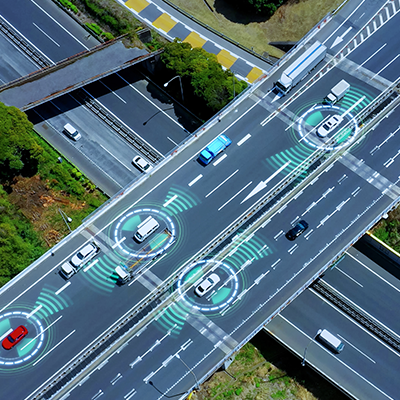- Home
- Services
- Advanced driver-assistance systems (ADAS)
- Camera Systems Calibration
Camera Systems Calibration

Vehicle camera systems are a new onboard active safety systems. The beginning of use was in vehicles of a high and higher class, and recently it has taken an increasing share in both the middle and lower segment of vehicles. We distinguish between outdoor and indoor cameras on vehicles. External cameras have various tasks such as monitoring the lane, reading vertical and horizontal traffic signals, monitoring the environment of the vehicle, spotting a free parking space, and assisting with parking. These in-vehicle cameras have found applications in active systems such as the ADAS system (Advanced Driver Assistance System), passive safety, as well as part of the comfort component inside the vehicle.
The main task of external cameras is to monitor the lane, spotting vehicles moving in front of the vehicle, or in the vehicle's environment. Traffic signal recognition is extremely necessary for fully autonomous vehicles. The task of the cameras is to recognize various traffic signs and objects potentially dangerous for the vehicle, and based on algorithmically processed information, the control unit evaluates and activates individual systems on the vehicle. For fully autonomous vehicles, the Surround-view, which is collected via the camera, is also of great importance. Records are digitally processed, compressed and algorithmically processed in the control unit. In this way, a more faithful vehicle environment is obtained when driving autonomously. Parking assistance is another task of the camera. In city crowds, finding a parking space also creates problems for experienced drivers. In cooperation with sensors in parking lots and surround cameras, it finds the closest free parking space, and through automated control independently parks the vehicle in free space. Traffic vulnerability detection is a generic term that encompasses the ADAS system, and through the control unit during autonomous driving systems finds the least loaded direction of travel, avoids traffic jams, allows the speed of arrival at the destination, and reduces the likelihood of accidents.
Internal cameras have the task of monitoring the activity inside the vehicle, especially the driver, ie his focus on the ride itself.
The Driver Monitoring System (DMS) monitors the driver's driving behavior via cameras in the control panel. This system will become mandatory under Euro NCAP in vehicles from 2025, and will assess the reactions of drivers in the current circumstances as well as the speed of reactions. If the system determines that the driver is tired, the yawn has half-closed shutters and will warn the driver to stop resting using the control system on the control panel. Another task of indoor cameras will be the so-called detection of vehicle occupancy, i.e. detection and alerting if a child or pet is left inside after parking and locking the vehicle.
Tips
- Connect the vehicle to the diagnostic equipment, according to the manufacturer's recommendations at certain time intervals
- Adjust camera settings according to the manufacturer's settings
- In the event of a malfunction or accident, the camera must be replaced.
Scope of services
- Adjust the cameras with diagnostic equipment
- Camera replacement in case of malfunction.
Find a car workshop
Check out our workshops that offer the service camera systems calibration in some of the biggest cities in your country
Additional info about the service
Cameras on vehicles
The front camera horizontally covers a field of 50 ° to the left and right of the imaginary longitudinal axis of the vehicle X. It also covers a vertical field Y of 27 ° upwards and 21 ° downwards to the position of accommodation on the vehicle itself.
The camera's detection field is 150 m from the vehicle itself, and the recording resolution is 2.6 MP. The software algorithm of the camera is set in such a way that within the tracking field it first detects moving objects, then immovable ones, and then objects outside the immediate danger field. Movable and immovable objects are algorithmically processed and sent to the central electronic unit. Immediate danger recognition is algorithmically recalculated to the speed and direction of vehicle movement, so that at any time and potentially harmless objects if they collide with the movement of the vehicle itself, the system can react, stop or slow down the vehicle.
In addition to the front camera, the rear camera and side cameras that monitor the blind spot of the vehicle are mounted on the vehicle. Side cameras are usually housed inside mirrors.